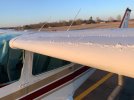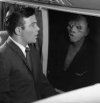Zeldman
Touchdown! Greaser!
In Alaska I never took off with ice on the wings, but I sure landed a few times with ice.
That's my story and I'm sticking with it...
Actually we used de-icing sprayer to get ice off before take off. The C-207 will carry a lot more ice than most folks would think. Or so I'm told...
That's my story and I'm sticking with it...

Actually we used de-icing sprayer to get ice off before take off. The C-207 will carry a lot more ice than most folks would think. Or so I'm told...






